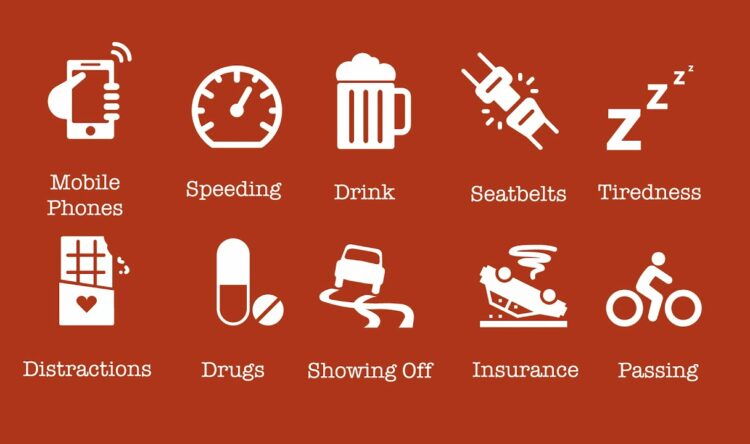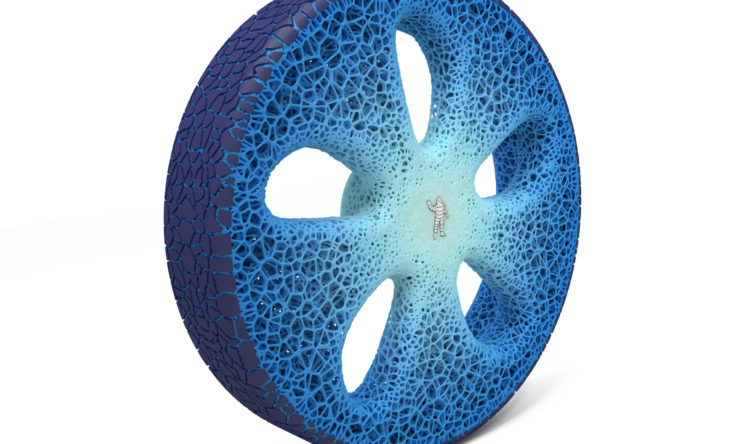A map of car dependency in the UK
Reduced car dependency post pandemic does not seem to be materialising
The first lockdown was expected to reduce our reliance on cars and commuting. Our view of a healthier, better work life balance were all advanced. However, research by Vanarama reveals the UK quickly got back up to speed and pre-pandemic levels of congestion. In fact, some areas now have more traffic.
Despite unprecedented production delays and used car prices on the rise, car use is as high as ever. So what are the areas in the UK that are most dependent on their four wheels?
West Midlands the most car-dependent area of the UK
With an overall score of 79.8 on Vanarama’s car-dependency index, the West Midlands is statistically the region most reliant on cars. The area’s annual mileage per person of 9,138 miles, the highest by some way.
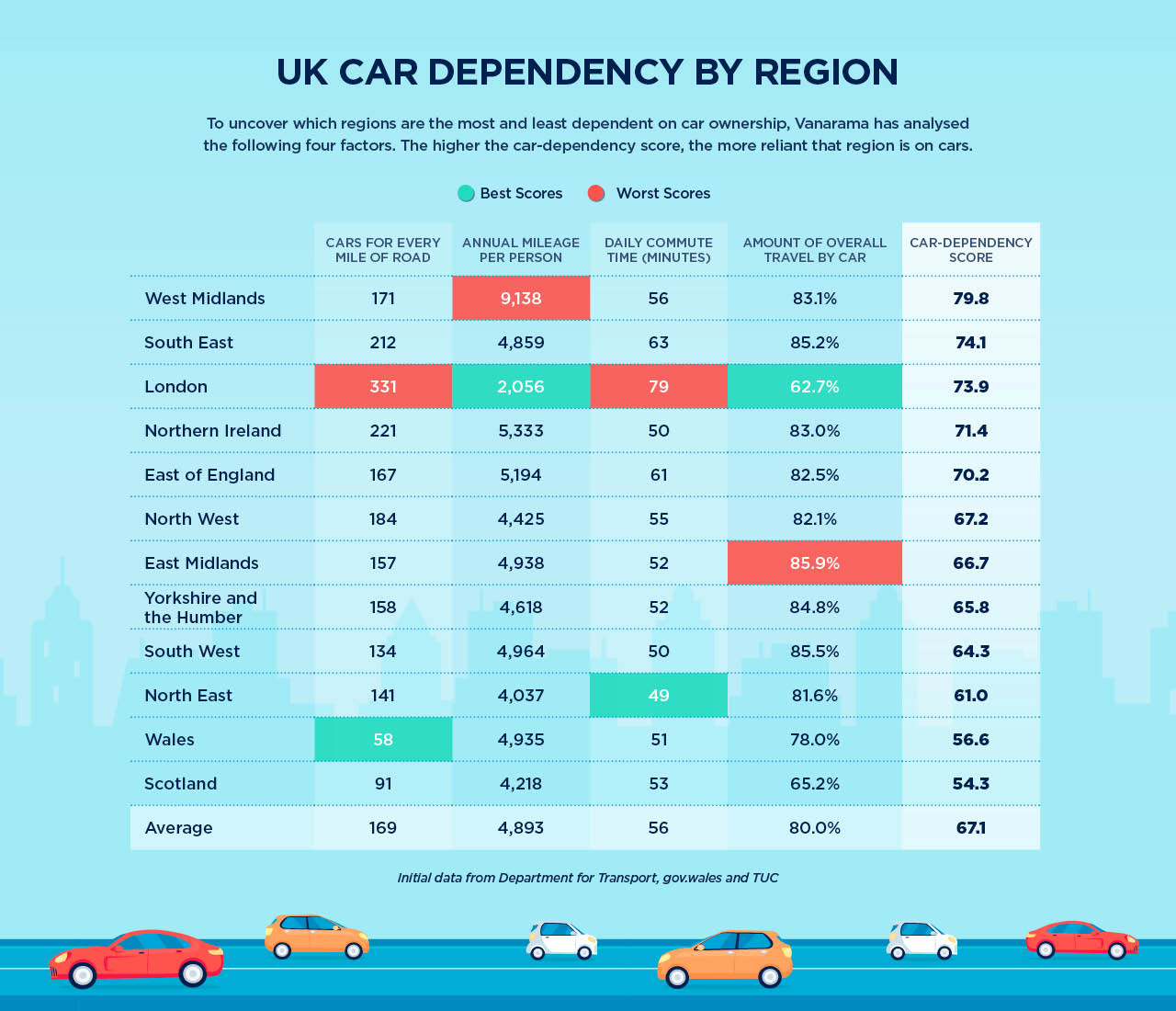
Only slightly better off is the South East. This comes as a surprise considering it is home to more than one tenth of Great Britain’s road length. It’s also the worst-hit area for fuel shortages, with petrol and diesel stocks at only 0-20% capacity.
London has the best scores for annual mileage and car travel as a percentage. However, the capital is let down by both the number of cars per mile of road and commute times – the worst in our study. It is the third most car dependent region in the country.
The North East has the shortest commute times in the UK
As well as being the second lowest for annual vehicle miles, the North East also offers the shortest commute at 49 minutes and 12 seconds. London drivers will spend a further 30 minutes commuting each day – that’s five days more behind the wheel every year.
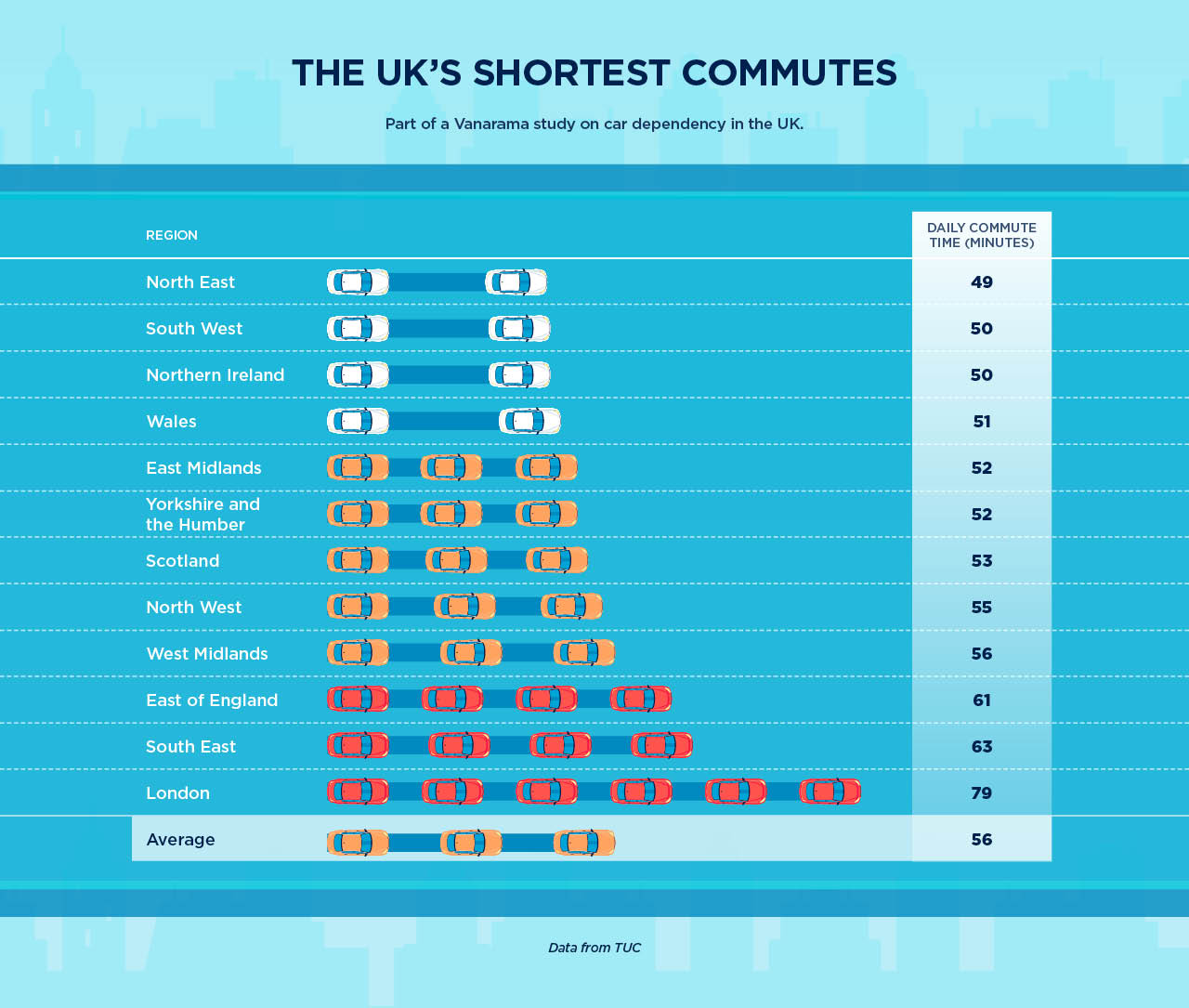
Wales also scores well on the work run at 50 minutes and 48 seconds each day. The majority of that time will be free of traffic as well, as the country has only 58 cars for each mile of road. By comparison, there are 273 more cars for each mile of London.
Scotland is also favourable for commuters. It is the only other region with less than 100 cars per mile and a commute time of 53 minutes and 24 seconds.
South East drivers travel more than any other region
Motorists in the South East are the most travelled by some distance. Collectively they rack up 44.7 billion miles a year (2020). Northern Ireland, by comparison, is less than a fifth of that with only eight billion, making its motorists the least travelled.
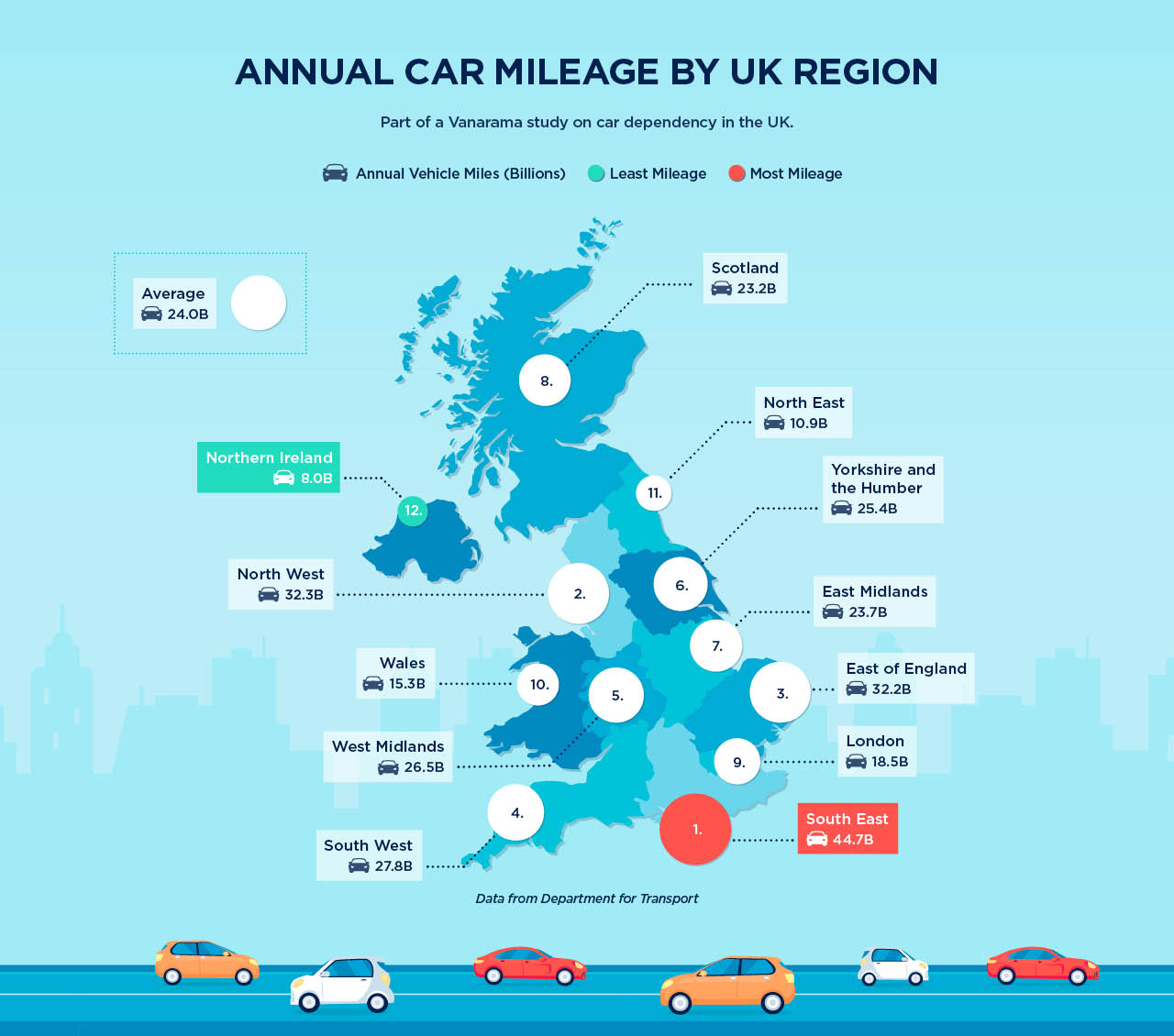
Despite its nine million inhabitants, London also comes out as one of the least travelled in terms of vehicle miles (18.5 billion). Considering the congestion levels in the capital, it is perhaps no surprise public transport will be a much more appealing option.
This is reflected in the percentage split – car travel in the capital accounts for only 62.7% of the overall, more than a fifth lower the East Midlands’ 85.9%.
The UK’s low-emissions zones will increase by 150% in the next year
London’s Ultra Low Emissions Zone is a bid to reduce pollutants in the capital by charging non-compliant vehicles. This expanded in late October 2021 – a change that makes it 18 times larger.

More examples of low emission zones are cropping up around the UK. Our reliance on cars (or rather on petrol and diesel) is likely to face its biggest challenge yet. Currently, there are four cities operating low-emissions zones – London, Glasgow, Birmingham and Bath. However, the number of them could more than double by 2022, with six additional zones planned. Manchester, Newcastle, Sheffield, Edinburgh, Aberdeen and Dundee all have plans in place. Although several of them don’t punish private cars just yet, the rules may become stricter with time.
Read the full data here.

